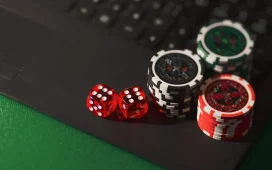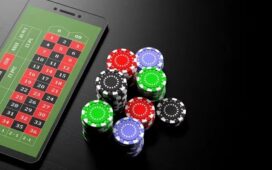Cryptocurrency-based gambling applications have introduced a new dimension to traditional slot machine mechanics. These digital platforms leverage blockchain technology to create gambling experiences that claim enhanced transparency and fairness. Among the psychological elements that make these games compelling is the near-win phenomenon, which occurs when slot displays show results that appear close to winning combinations. This cognitive effect creates distinctive reactions in players and influences continued engagement with crypto gambling platforms.
Design elements that amplify near-win effects
Cryptocurrency slot games deliberately incorporate design features that emphasize near-misses:
- Animated highlights that draw attention to “almost matching” symbols
- Extended spinning of the final reel, building anticipation
- Sound effects that escalate and then abruptly change upon the near-win
- Visual emphasis showing how close the player came to winning
These design elements aren’t accidental but carefully calibrated to maximize player engagement and extend play sessions. The transparency claims of blockchain technology may lead players to perceive these games as fairer than traditional slots, potentially strengthening the impact of near-win displays.
Statistical illusions in crypto gambling
Crypto slots often display near-wins at frequencies that exceed mathematical probability, creating illusions about winning likelihood. This statistical manipulation makes games feel more winnable than they are. Players who visit crypto.games to play cryptogames may notice these frequent near-misses without recognizing their programmed nature.
The random number generators that power crypto slots can be coded to display near-win combinations at predetermined rates, independent of true randomness. While blockchain technology may verify that each result wasn’t tampered with after the fact, it doesn’t prevent algorithms from being designed to show disproportionate numbers of near-wins.
Loss disguised as wins
A related psychological phenomenon occurs when players receive smaller payouts than their original wagers. These “losses disguised as wins” trigger celebration animations and sound identical to genuine wins, further blurring the distinction between winning and losing. The brain processes these events partially as wins despite their negative financial impact.
This effect can be especially pronounced for crypto gamblers since token values may fluctuate, making it harder to track actual monetary outcomes. The combination of token value abstraction with celebratory feedback creates powerful cognitive distortions about gambling outcomes.
Cultural and social reinforcement
Communities around cryptocurrency gambling often share stories of near-wins and eventual payoffs, creating social reinforcement of continued play. Discussions about “due” wins and patterns that seem to predict outcomes flourish in these spaces despite lacking statistical validity. These narratives strengthen the psychological impact of near-wins by suggesting they foreshadow eventual success.
Mitigation strategies for players
Players can adopt several approaches to counter the psychological pull of near-wins:
- Setting strict time and spending limits before beginning play
- Tracking actual expenditures rather than focusing on wins
- Recognizing that near-wins are programmed events, not indicators of impending wins
- Taking regular breaks to reset dopamine sensitivity
Regulatory considerations
As cryptocurrency gambling grows in popularity, regulatory bodies worldwide face challenges in addressing these psychological mechanisms. Traditional gambling regulations may not adequately apply to decentralized platforms, creating potential gaps in player protection regarding manipulative display tactics.
The borderless nature of cryptocurrency complicates enforcement efforts, even as the psychological effects of near-win displays maintain their powerful influence on player behaviour and cognition. This regulatory gap presents ongoing challenges for addressing the cognitive impacts these games create.


















